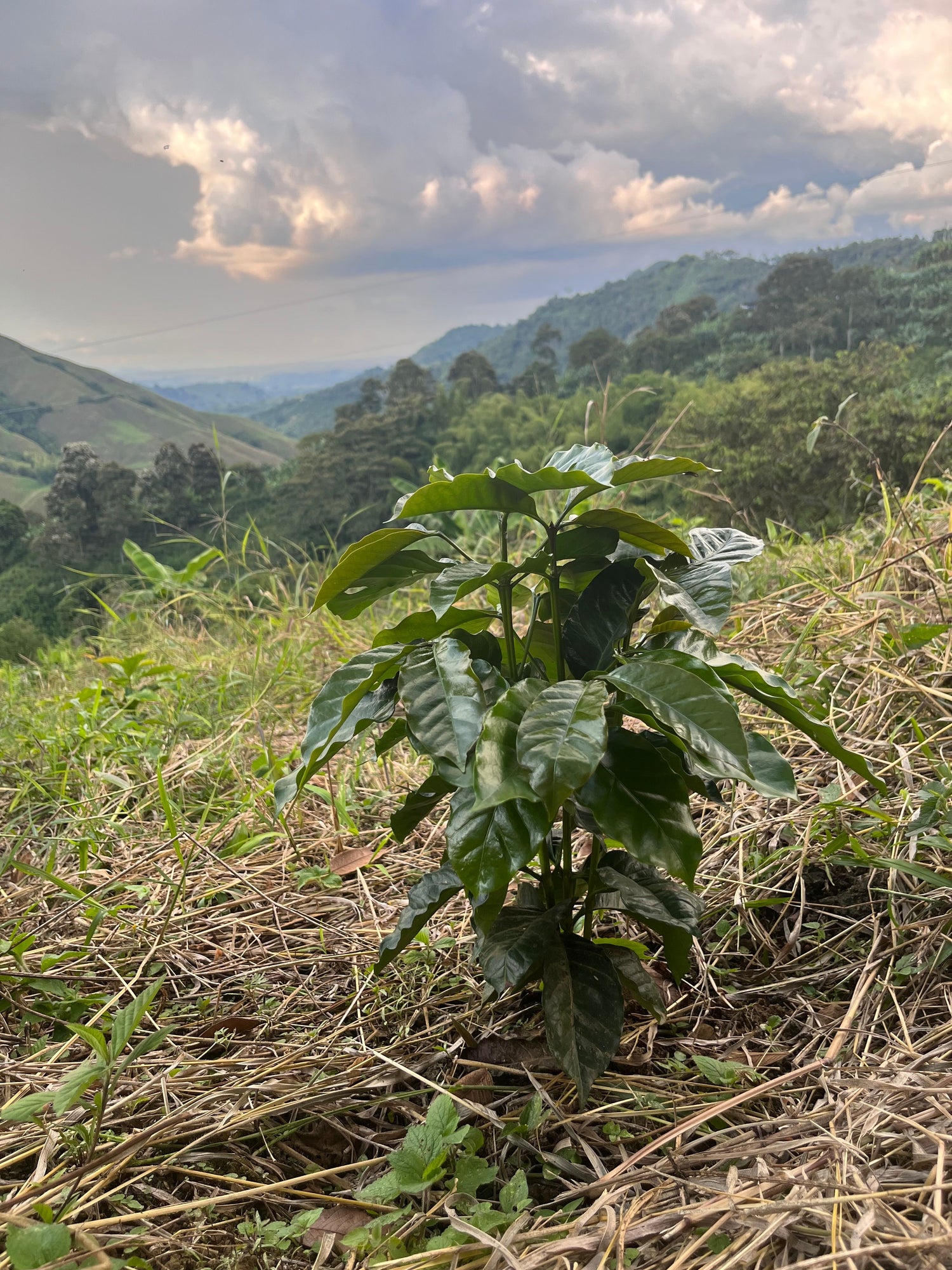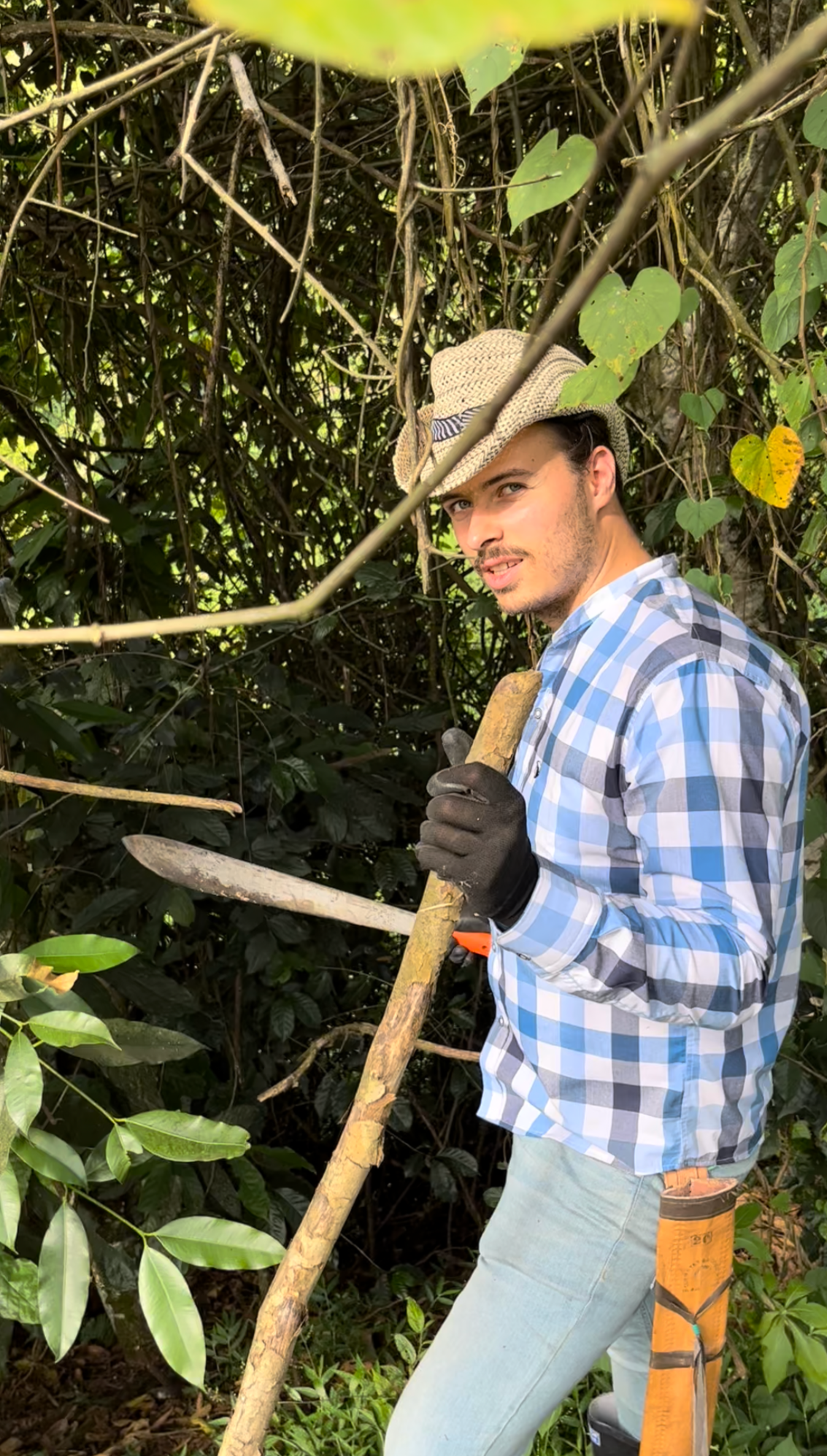Coffee is now grown in many countries around the world that are located in the so-called coffee belt . Coffee is much more than just a drink - it is a journey from the plant to the cup, where every stage influences the unmistakable aroma and taste. The art of growing coffee extends across different climate zones, cultivation techniques and processing methods. But how is coffee actually grown? In this article, we will delve into the fascinating world of growing coffee and explore the factors that influence the unique coffee aroma. It is particularly important to us to pay close attention to the origin of the raw material in order to show where the coffee actually comes from and what it looks like there. Some coffees have flavor components that are typical for their origin - in the end, the taste depends not only on the roasting or processing, but also to a large extent on the cultivation, location, etc.!
How is coffee actually grown?
To put it simply, coffee cultivation takes place in four phases:
- planting
- care and growth
- flowering and fruiting
- harvest
This is followed by the processing of the fruit into beans and then into the final roasted product and the drink in the cup. The four phases are described below. We will focus particularly on the harvest phase here, as it is important to us at Welttisch to harvest using the hand-picking method in order to guarantee the high quality and even ripeness of our coffee cherries.
Planting the coffee plant:

It all starts with a small seed that is sown in a special seedbed. A seedling develops from this seed. In Colombia, these seedlings are called chapolas. After a while, the seedlings can be "repotted" into real soil, but initially in their own bag. The seeds must be carefully selected so that only healthy plants are planted. The seedlings grow into small trees and after about 6 months they are ready to be planted in the open field.
At our finca “La Macarena” you can experience the different stations and learn more about them from experienced coffee farmers. Maybe you can even plant a coffee plant yourself?

Care and growth:
The coffee tree needs love and attention. Regular watering, fertilization and protection from pests are crucial to ensure healthy trees and a bountiful harvest. After about two years, the tree bears its first fruit that can be harvested. After five years, the plants are often pruned back to ensure long-term bearing of coffee cherries. If you are interested in coffee plants and their different life stages, check out our blog on the life cycle of the coffee plant !
Flowering and fruiting:
When the tree blooms, small white flowers appear that eventually ripen into coffee cherries. This development is a true symphony of nature, with each step leading to the formation of the perfect cherry. The cherries are green at first and become redder as they ripen. The finished cherries taste sweet - this sweetness can also be tasted in the cup at the end. 
coffee harvest

When harvesting, a distinction is made between three different methods: mechanical, stripping and picking. In mechanical harvesting, large machines are used that drive down the plants and completely strip them, i.e. all leaves and fruit are torn off. The stripping method, on the other hand, describes the individual removal of the beans from the branches. However, no distinction is made between the individual beans. In picking, on the other hand, the coffee farmer looks at each fruit and harvests by hand only those that are ready to be harvested. Unripe fruit is left on the tree, overripe fruit or rotten fruit is discarded. For our specialty coffees, we only use the picking method to ensure the best quality. This is a very complex process, as the farmers have to go through the entire plantation every day for many months to "pick out" only the good cherries. After all, we don't want the taste of your coffee to be affected by unripe coffee beans or overripe & rotten beans!
Here you can learn more about the strenuous work of coffee harvesting in Colombia.
Which factors influence the aroma/taste of coffee?
Climate and altitude as factors influencing the taste of coffee :
The climate in which the coffee grows is crucial to its aroma. Higher altitudes can result in cooler temperatures, resulting in slower growth and more complex aromas. The interaction of sun, rain and temperature shapes the character of the coffee.
Soil composition as an influencing factor on coffee taste:
The soil in which the coffee plants grow plays an important role in the formation of aroma. Different minerals and nutrients in the soil affect the taste of the cherries. Volcanic soils, for example, can lead to a rich and fruity profile.
Cultivation and harvesting methods as influencing factors on coffee taste:
The way in which coffee is grown and harvested has a direct influence on the aromas. Selective harvesting by hand allows for careful selection of ripe cherries, which leads to higher quality. Machine harvesting, on the other hand, can result in a mixture of ripe and unripe cherries, which affects the end product. Coffees harvested in this way are often full of coffee cherries that have been attacked by pests. The taste and smell cannot be compared to a specialty coffee. Inferior coffees are traditionally roasted quickly and darkly, with the beans deliberately partially burned to hide such defects.
The different coffee growing regions and their unique flavors:
Different coffee growing regions are each known for their different locations, altitudes and soils. This has a direct influence on the distinctive aromas of the coffee beans.
Coffees from Ethiopia are often known for their citrus aromas and notes of candied fruit or nuts - beans from Kenya are more known for their berry notes and intense acidity and pronounced sweetness. In contrast, coffees from Thailand are generally less intense, slightly sweet and have hardly any noticeable acidity. Brazilian coffees are known for their more nutty, chocolatey aromas (Brazil is also one of the primary producers of Robusta coffees). Due to the different altitudes and different climatic conditions, there is a very wide range of flavors in Colombia, from fruity, almost tangy flavors to heavier chocolate notes, and not one central characteristic. Find out more about coffee cultivation in Colombia in our blog .
How are the coffee beans processed into green coffee after harvest?
Coffee processing immediately after harvest: Handling the coffee cherry

Wet processing vs. dry processing: The processing of the coffee cherries after harvesting has a strong influence on the later aroma. Wet processing involves removing the fruit skin, while dry processing allows the cherries to dry in the sun, which creates different flavor profiles. Wet processing is also referred to as "washed" coffees, and dry processing is referred to as "natural". Washed coffees are much more common in Germany and the taste of natural coffee can be very unusual when first consumed due to the fermentation and not to every consumer's liking. However, it is recommended to try it out and get involved in the other world of flavors. In addition to the processes mentioned, there are others that we will also go into in detail in our blog in the future. Examples of this are the honey process or the partially washed process.
The coffee then gets its finishing touches.
Fermentation and drying of coffee after harvest:
The duration and type of fermentation as well as the drying method have a direct influence on the aromas. Longer fermentation times can lead to more intense and complex aromas, while careful drying ensures consistent quality. Depending on the processing method, the coffee remains on the drying beds for several weeks and must be turned over regularly during this time. Otherwise, there is a risk of rotting due to the moisture.
The final steps to green coffee and roasted coffee:

To achieve the final product, the fermented and dried beans are first processed into green coffee. The skin that surrounds the beans is removed. The end product is the green beans, which are usually exported. Once they have arrived in the destination country, the coffee beans are roasted and this creates the coffee that we all know. We use the drum roasting process for roasting, as this process brings out the aromas particularly well and gently. You will soon be able to read more about the different roasting processes in our blog.
A rule of thumb for roasting: If your espresso extracts the desired amount of coffee in 25 seconds, you should experience the taste that the roaster intended to achieve.
Coffee farming is a masterful combination of nature and man. Every stage, from cultivation to harvesting, processing and roasting, influences the aroma and taste of the coffee. By understanding the factors at work during the extraction process, we can discover the diversity and beauty that lies in each cup. Next time you enjoy your coffee, remember that there is a whole world of cultivation and passion behind this pleasure.






